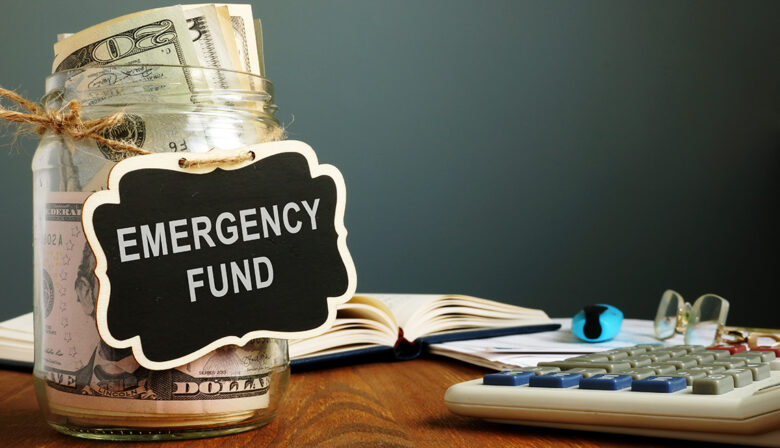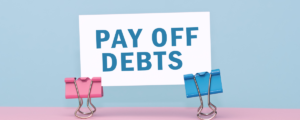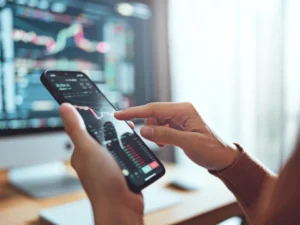A personal emergency fund is a crucial part of financial security. Life is full of unexpected events, and situations like job loss, medical emergencies, or urgent home repairs can arise at any time. An emergency fund allows you to prepare for such crises without resorting to credit cards or high-interest loans. This fund serves as a safeguard for your finances, offers a sense of security, and aids in the achievement of your long-term objectives. Starting from scratch may seem daunting, but with the right attitude and behavior, it is absolutely achievable.
Set an Attainable Savings Goal
Setting a realistic savings goal is the first step to building a smart emergency fund. Many people generally recommend an amount equal to three to six months of living expenses. This includes groceries, rent or mortgage, utilities, transportation, and insurance. By adding these amounts together, you can calculate how much you need to feel secure. Even if the ultimate goal seems large, breaking it down into smaller, more manageable steps can make it less daunting. A smart way to start is by saving your first $500 or $1,000. This initial investment will help you get started on a path to greater progress.
Creating a Budget That Works for You
Creating a budget is the most important part of any savings plan. You need to understand your income and expenses to build an emergency fund. To understand where your money is going, start by tracking your spending for a month. Search for places where you can save money, even if only a little. This might mean eating out less, canceling services you don’t use, or cutting back on unnecessary expenses. By depositing this extra money into your emergency fund, you ensure it grows steadily. Managing your budget well allows you to stay in control and plan your finances wisely.
Automatic Savings
Setting up automatic payments is one of the best ways to save for emergencies without having to think about it. Set up an automatic transfer from your checking account to your savings account on payday. Think of this money as a fixed expense, just like rent or utilities. When you save automatically, you’re less tempted to waste it, and your money continues to grow. Even small, regular deposits will add up over time, helping you develop a saving habit. This approach makes the process easier and more reliable over time.
Find More Ways to Earn More Money
If you’re struggling to save money in your current job, you might want to explore other ways to earn cash. Freelancing, working part-time, or selling things you no longer need are all ways to save extra money. It is highly recommended to promptly deposit most or all of your remaining funds into your emergency savings. You’ll be less likely to lose money because it won’t be part of your primary income. This plan can help you act more quickly and get closer to your financial buffer without overburdening your regular budget.
How to Use Windfalls Wisely
Tax refunds, work bonuses, and subsidies are examples of unexpected money that can help you quickly build your emergency fund. It’s tempting to spend money on unnecessary things, but depositing this extra money into an emergency savings account can make a huge difference. It’s a wise decision that can bring you closer to financial security without sacrificing anything in the long run. Even putting some of your windfall into a savings account is a wonderful way to enjoy your money while planning for the future.
Choosing the Best Way to Save
It’s important to know where to keep your emergency savings. It should be easily accessible, but not so accessible that you’re tempted to use it for non-emergencies. A high-yield savings account is often a beneficial choice. It offers higher interest rates than a regular savings account and is easier to access when needed. Don’t put your emergency fund in stocks or other risky investments; you want it to be safe and easily accessible, not just increase in value. You can also mentally separate this fund from your regular checking account for emergencies.
Tracking Your Progress and Staying Motivated
Tracking your financial situation can help you stay motivated and accountable. Take time regularly to evaluate your progress toward your goals. To maintain your enthusiasm, celebrate small victories. For example, give yourself a small gift when you reach a specific goal. If you’re falling behind, review your budget and replan without judgment. Be open to change and stay focused, knowing that every penny you save brings you closer to a secure future. Building an emergency fund takes time, but it will pay off in the long run.
How to Maintain Your Emergency Fund After You’ve Created It
Reaching your financial objectives does not signify the end of your efforts. You need to ensure your fund remains sufficient and replenish it each time you use it. Life will always bring obstacles, but a reliable emergency fund keeps you prepared. Don’t use your emergency fund for non-emergencies. If you do need to use it, make sure you replenish it as quickly as possible. This ongoing effort ensures your financial security and prevents small problems from escalating into major ones.
Conclusion
Building a smart emergency fund from scratch is a crucial step toward financial stability. It requires clear goals, self-control, and daily effort. Anyone can create a safety net for life’s unexpected events by setting realistic goals, creating a budget, automating savings, and utilizing extra money or unexpected windfalls. By selecting appropriate savings tools and maintaining current funds, you can prepare for emergencies without incurring debt. This path may start small, but every step you take will make your financial future stronger and more secure. Taking action today can give you more confidence and peace of mind tomorrow.
FAQs
1. How much should I save for emergencies?
A good rule of thumb is to save enough to cover three to six months of living expenses. If you’re just starting out, try to save at least $500 to $1,000 just to be safe.
2. Where should I keep my emergency fund?
A high-yield savings account that’s easily accessible and separate from your regular spending accounts is the best place to manage your emergency fund.
3. How can I save money if I only get paid once a month?
Start small. Even saving $10 a week can be a significant expense. Start with small savings options and figure out how you can generate extra income or get a windfall to save more.
4. Can I use my emergency fund for large expenses?
No. Use your emergency fund only for unexpected, necessary expenses, such as medical bills, urgent car repairs, or job loss. Don’t use it for planned or optional expenses.
5. What if I withdraw money from my emergency fund?
That’s what it’s for. Make sure you deposit it back into your emergency fund as soon as possible so you’re prepared for any problems.




